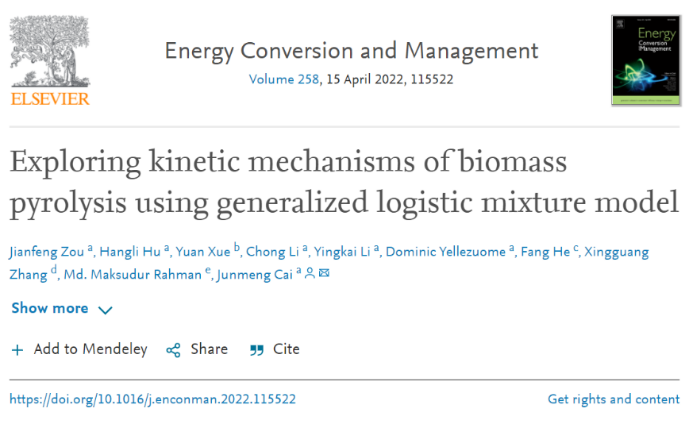Energy Conversion And Management Impact Factor

Imagine a world powered by the gentle hum of innovation, where sustainable solutions seamlessly intertwine with our daily lives. Sunlight streams through windows, fueling homes, while wind turbines dance on distant hills, providing clean energy for cities. This vision, a tapestry woven with threads of ingenuity and responsible resource management, relies heavily on the advancements showcased in publications like Energy Conversion and Management.
At the heart of academic publishing lies the Impact Factor, a metric used to gauge the influence and importance of a journal within its field. For Energy Conversion and Management, a leading journal dedicated to exploring and advancing energy technologies and policies, its Impact Factor serves as a crucial indicator of its contribution to shaping a sustainable energy future.
Understanding the Impact Factor
The Impact Factor, calculated annually by Clarivate Analytics, reflects the average number of citations received in a particular year by papers published in a journal during the two preceding years. It is a quantitative measure that attempts to capture the journal's influence within the academic community.
A higher Impact Factor generally indicates that the articles published in the journal are frequently cited by other researchers, suggesting that the journal is publishing influential and impactful work. This metric plays a significant role in how researchers choose where to publish their work and how institutions evaluate the quality of journals.
However, the Impact Factor is not without its limitations. It is merely one metric among many and should be considered alongside other factors like the journal's scope, editorial board, and the specific needs of the research being considered.
A Historical Perspective
Energy Conversion and Management has long been a prominent voice in the field of energy research. Founded decades ago, it has consistently provided a platform for groundbreaking studies on topics ranging from renewable energy systems to energy efficiency and storage.
Over the years, the journal has adapted to the evolving landscape of energy research, embracing new technologies and methodologies while maintaining its commitment to rigorous scientific inquiry. Its Impact Factor has generally reflected its standing as a leading journal, though it's important to track changes and trends within the field.
The journal’s resilience and adaptability are reflected in its consistent presence and strong contributions to the scientific community over time.
Significance of a High Impact Factor for Energy Conversion and Management
A strong Impact Factor for Energy Conversion and Management carries several important implications.
Firstly, it attracts high-quality submissions from leading researchers around the globe. Authors seek to publish in journals with high visibility and influence, knowing that their work will reach a wider audience and potentially have a greater impact on the field.
Secondly, a high Impact Factor enhances the journal's reputation within the academic community. This, in turn, attracts talented editors and reviewers, further improving the quality of the published articles.
Thirdly, it influences funding decisions and institutional evaluations. Research institutions and funding agencies often use Impact Factors as one of the metrics to assess the performance of researchers and the quality of their publications.
Areas of Impact: Driving Innovation and Shaping Policy
The content published in Energy Conversion and Management directly influences the development and deployment of sustainable energy technologies. Research on topics like solar energy, wind power, battery storage, and smart grids provides crucial insights for engineers, policymakers, and investors.
By showcasing cutting-edge research, the journal helps accelerate the transition to a cleaner and more efficient energy system. Articles often explore innovative approaches to energy conservation, waste heat recovery, and the integration of renewable energy sources into existing infrastructure.
The journal also serves as a valuable resource for policymakers, providing evidence-based insights to inform energy policies and regulations. Studies on the economic and environmental impacts of different energy technologies help guide decision-making and promote sustainable development.
Beyond the Numbers: The Broader Impact
While the Impact Factor is a valuable metric, it's important to remember that the true impact of Energy Conversion and Management extends far beyond the numbers. The journal plays a crucial role in fostering collaboration and knowledge sharing within the energy research community.
By bringing together researchers from different disciplines and backgrounds, the journal facilitates the exchange of ideas and the development of innovative solutions to complex energy challenges. It provides a platform for researchers to connect, collaborate, and build upon each other's work.
Furthermore, the journal contributes to the education and training of the next generation of energy professionals. Students and young researchers can learn from the published articles, gaining valuable insights into the latest advancements in energy technology and policy.
The Future of Energy Research and Energy Conversion and Management
The field of energy research is constantly evolving, driven by the urgent need to address climate change and ensure a sustainable energy future. Energy Conversion and Management is well-positioned to continue playing a leading role in this evolution.
As new technologies emerge and new challenges arise, the journal will continue to adapt and evolve, providing a platform for the most innovative and impactful research. It will embrace new areas of focus, such as artificial intelligence for energy management and the development of advanced materials for energy storage.
By maintaining its commitment to quality, rigor, and relevance, Energy Conversion and Management will remain a vital resource for researchers, policymakers, and anyone interested in shaping a sustainable energy future.
In conclusion, the Impact Factor of Energy Conversion and Management serves as a significant indicator of its contribution to the field. However, its real value lies in its role as a catalyst for innovation, collaboration, and the development of a sustainable energy future. The journal's commitment to advancing knowledge and promoting responsible energy management makes it an invaluable resource for addressing the pressing energy challenges of our time.


















